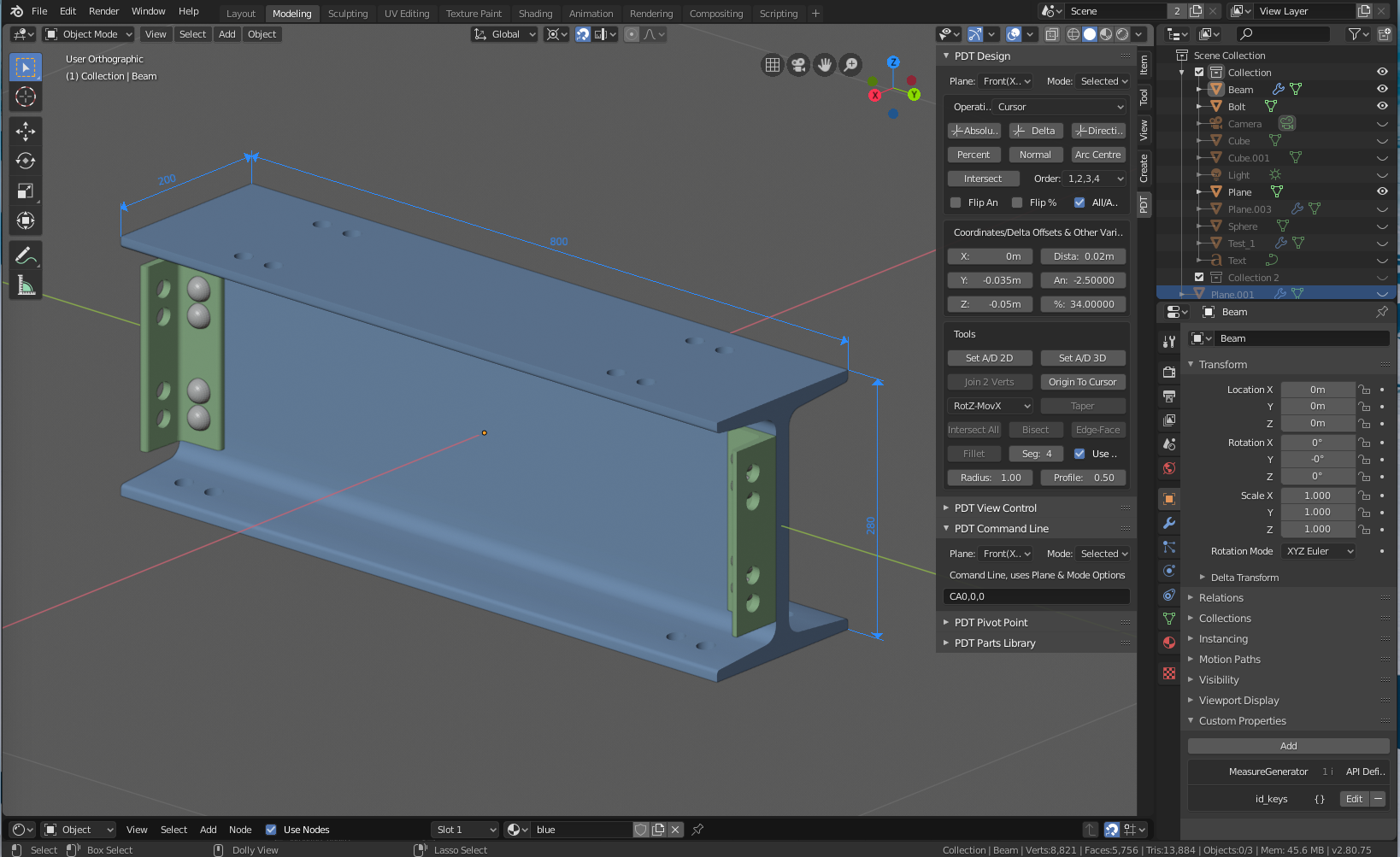简介

用PDT绘制的物体和用MeasureIt测量的尺寸
PDT是为Blender 2.8和所有后续版本设计的。没有针对早期版本的Blender的版本。
The key objective is to make precision modeling easier and more capable in Blender in order to allow Designers of all genres to model accurately.
有趣的是
There is definitely a difference in the way that "CAD Designers" and "Polygon Modelers" work. Polygon Modelers, the traditional Blender users, tend to start off with a basic primitive 3D mesh, like a Cube, or a Cylinder, then start to add Edge Loops to cut it up, to extrude sections to make it more complex, to add "holes" and then work these. They will often use Sub-Division modifiers to make the model more detailed, whereas CAD Designers consider these to largely be unsuitable and reduce accuracy. This means more vertices in the mesh from CAD modeler, but probably about the same after all has been taken into account.
CAD建模人员几乎不会根据以前的图纸或照片来建模,他们总是只根据报价的尺寸来工作。为此,想想一张比例为50:1的图纸 - 一条宽度为0.5毫米的线在现实世界中实际上是25毫米厚。许多图纸上都写着 不要按比例 的口号 - 这是有原因的,古老的传统手绘图纸首先不一定是准确的!
传统的CAD设计师(我用 CAD 这个词指的是被认为是计算机辅助设计的产品,如SolidWorks、AutoCAD、MicroStation等)倾向于制作一个精确的平面环,如支架的正面或建筑物的墙壁,然后将其挤出,或 "翻转 "为一个三维网格。长期以来,人们一直认为这种方法会带来更精确的模型,例如,可以用于3D打印。
PDT aims to introduce this method of working into Blender, for the benefit and inclusion of all genres of CAD Designers and to augment the tools for the Polygon Modeler. It has been developed by a former Mechanical Design Engineer with many years experience in drawing offices, using hand drawing and CAD techniques.
命名法
There is also the situation where CAD Designers and Polygon Modelers use different terms, like Absolute versus World coordinates, Delta versus Incremental, Directional versus Polar. Primitives themselves are also named differently, Vertices, Edges & Faces versus Points, Lines & Polygons - PDT takes care of this by providing a file that users can edit to input their own terms, including their own languages.